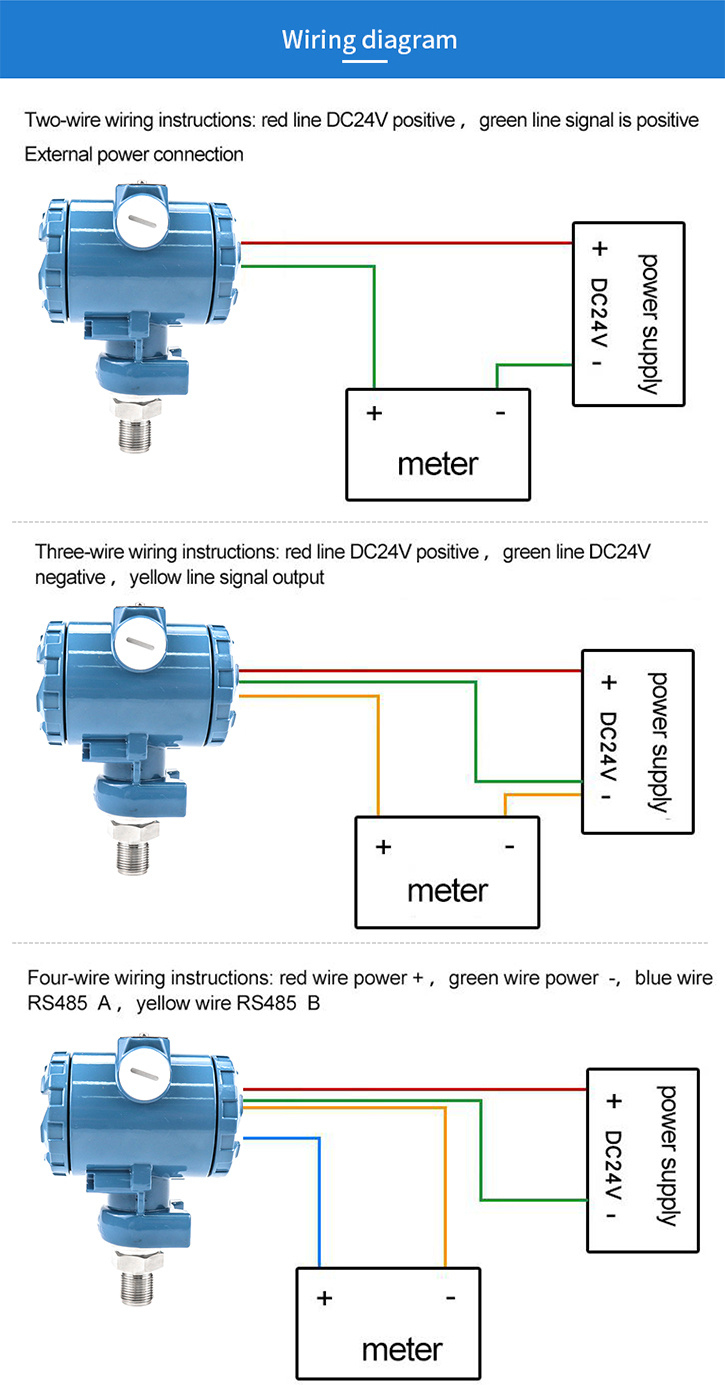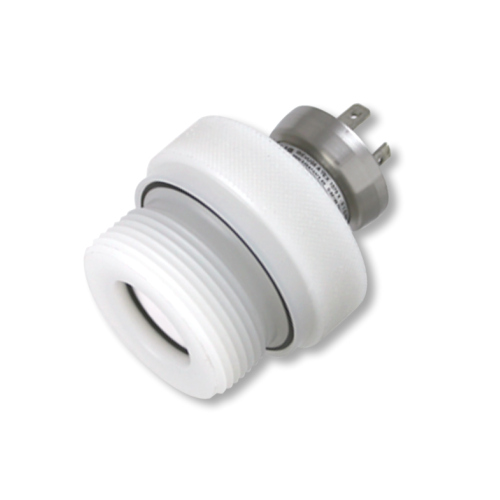Why Use Calibration Software for Pressure Sensor for Sewage Treatment?
Pressure Sensor for Sewage Treatment Unravels Disposal Mechanisms
Among prevailing multi-use pressure sensors, the Pressure Sensor for Sewage Treatment is receiving astonishingly good reviews. Pressure sensors are not an uncommon invention. The use of pressure sensors has increased in every industry in the past few decades. Most pressure sensors are present in a pressure transmitter. Any substance with volume exerts pressure.
Therefore, the maintenance and balance of this pressure require a sensor. Sensing pressure changes leads to unlimited benefits for various industries.
The most apparent industries being gas, oil extraction, and water sewage. Apart from these industries, medicine and laboratories also make fair use of pressure sensors.
You May Also Read: Effective Calibration Steps for Pressure Transmitter for Sewage Treatment
A pressure sensor's job is not easy by all means—industries with a good revenue that value their time and energy on employing human resources for pressure checking.
Automated sectors continue to lead since it increases efficiency and reduces human error. Industries that use pressure sensors take part in the future of pressure control. The fascinating thing about a pressure sensor is that it has variable uses.

Hence, pressure sensor manufacturers do not have a strict production rule. The same pressure sensor model can benefit from all kinds of settings. Like all products, the pressure sensor also has a history and point of origin. The pressure sensor we see today is a product of many adjustments. Regardless, pressure sensors are an asset for any industry and machine.
Understand the Composition of a Pressure Sensor for Sewage Treatment
A standard Pressure Sensor for Sewage Treatment has the same composition as a typical pressure sensor. Pressure sensors act as pressure transducers and transmit small signals when the pressure increases or decreases from the set limit. Most machines and containers display a range; the pressure needs to limit itself within this range.
Consequently, a pressure transmitter's job includes making sure that that range receives consideration while the pressure changes. As soon as the pressure change registers on the pressure sensor plates, it must transmit signals repeatedly. Pressure sensors go by many names, such as pressure transmitters, pressure transducers, pressure gauges, pressure indicators, etc.
Pressure Sensors come in a considerable variation, the reason being that there is room for improvements. On average, more than fifty eager companies construct pressure sensors. Every manufacturing company wants to add a unique selling point to their creation. Indeed, this has increased diversity but has also lowered the cost.
For instance, many different categories of pressure sensors come to use to estimate high-speed pressure changes. High-speed pressure changes result in inaccurate measurements, thus compromising the integrity of an operation. A pressure sensor suited for every kind of work exists. Here is a list of the types of pressure sensors you should know about:
- Absolute pressure Sensor: Measures pressure relative to the perfect vacuum
- Pressure Sensor for Sludge: The pressure measurement of water levels
- Vacuum Pressure sensor: Measuring pressure in the state of vacuum, i.e., no air particles
- Differential pressure sensor: Measuring the difference between two substances exerting pressure
- Sealed Pressure Sensor: Measuring pressure against a previously set constant instead of the atmospheric pressure
All these pressure sensing instruments aid in the functionality of a device and its performance. A pressure sensor can do more than what meets the eye.
The role of Pressure Sensor for Sewage Treatment
A Pressure Sensor for Sewage Treatment rarely makes its way around in the list of components used. Many sewage treatment methods exist on the planet today. Sewage or waste is the by-product of human settlement on earth. A little mess is bound to be created when there are so many functions carried out. If all the sewage and waste in the world got left undisposed, we would not have enough space to walk.
Hence, relying on natural decomposition is a danger to the environment. Nature has a course of doing things, and yet sometimes we must interfere. The modern decomposition process is based on the work of nature itself. Speeding up the decomposition process with catalysts is also part of sewage treatment.
Wastewater treatment in industrial areas can be tricky. Industrial waste differs from household waste. Industrial waste is potentially corrosive; moreover, it afflicts the surrounding community with unstable living conditions. The pressure sensor present in the sewage removal plant controls the pressure of the wastewater.
The wastewater level in a sewage plant increases and decreases at certain points of the day. Seizing control of the wastewater with a pressure transmitter manages the pressure and alerts the management if the level gets dangerously high. Physical Chemical and Biological treatments exert themselves on the sewage to decontaminate it effectively. The chemicals are bound to come in contact with the pressure sensors at some point.
Therefore, most pressure sensors for sewage treatment have anti-corrosive exteriors. The anti-corrosive property of the pressure sensor diminishes any vulnerability to toxic waste. The wastewater has to move from one station to another smoothly and without spillage. A pressure sensor ensures that pressure levels in each station are regular. There are multiple pressure sensors placed all over the sewage treatment plant.
The Physical Make up of a Pressure Sensor
A pressure sensor appears surprisingly small compared to the job it performs. Wastewater level monitoring is essential for a number of reasons. A pressure sensor takes care of water level maintenance, wastewater flow control, and wastewater measurement. The fact of the matter is that pressure sensors for sludge treatment have significantly novel features. These features are summarized below:
- Hydrostatic Pressure Range starting from 0.4 to 20 bar
- Media Compatibility
- Weight of up to 200 g
- 25mm diameter
- Output Signal of 2-22Ma
The reliance on pressure sensors is further affirmed by the fact that calibration software is necessary for sewage treatment. The calibration software is put in places where even the slight possibility of a misnumbering can be endangering. Sewage treatment plants directly cater to the local area. If the calibration system is not placed inside a pressure sensor, the results may appear drastic.
What is the purpose behind a Calibration Software in a pressure Sensor?
Performing effective calibration sets a restriction for sedimentation basins, aeration basins, clarifiers, and settling tanks present in the sewage system. Calibration systems installed in the pressure sensors that are installed inside water tanks have their own uses. Once the sewage treatment process is complete, these calibration systems measure the difference between output and put.
A calibration system links itself to an interface above the water sewage level. All the alerts and readings caught by the pressure sensor have a neat record. Keeping a record of all sewage level changes is necessary to avoid any unforeseen circumstance.
You May Also Read: The Accuracy Components of Pressure Transmitter for Hygiene Industry
Take Away
Pressure sensors integrate themselves continuously in industrial capacities; these transmitters' diverse exterior makes them suitable for places that humans could never have reached. A pressure sensor is a way forward in digital pressure maintenance. The customization carried out in all pressure sensor dependent industry calls out for a celebration.
Whether you choose to employ a pressure sensor in your business or not, you cannot deny the commercial benefits and solutions offered to small scale enterprises. Measuring and calculating pressure is now possible with one product.
For more information regarding Pressure Sensor for Sewage Treatment. Contact us now.

















